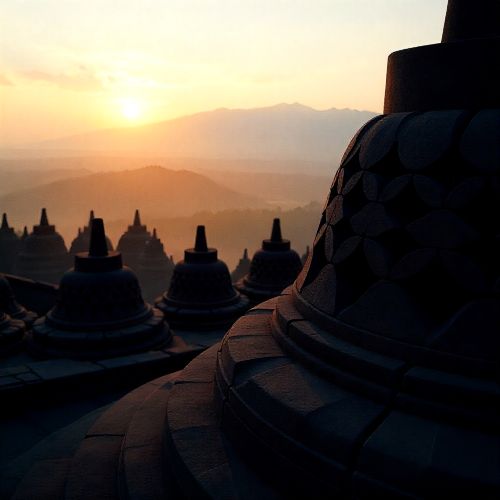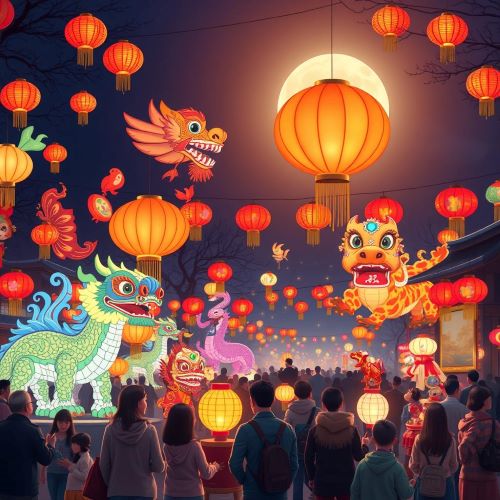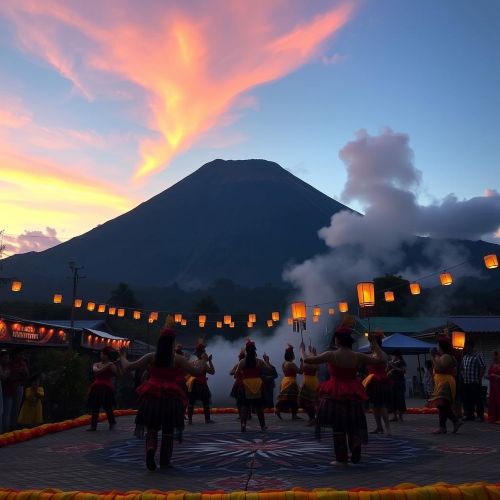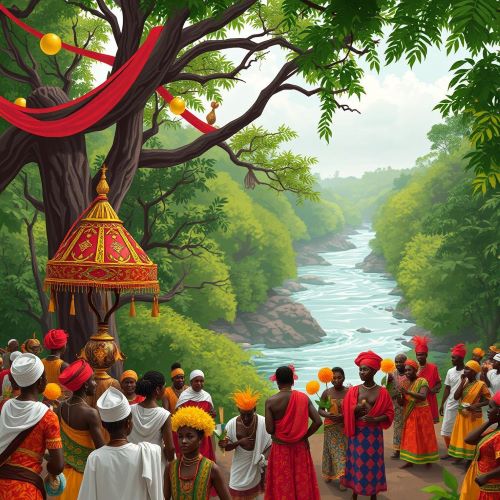Isia : Festival of Isis
At a glance
| Description | |
|---|---|
| Location | Philae |
| Country | Egypt |
| Dedicated To | Isis |
| Duration | 7 days |
| Time of Year | October – November |
Introduction
The Isia, also known as the Festival of Isis, was one of the most sacred celebrations in ancient Egypt. Dedicated to the goddess Isis—the divine mother, healer, and sorceress—it marked a powerful commemoration of her quest to restore her slain husband, Osiris. Celebrated each year in late October or early November, the Isia symbolized death, resurrection, and renewal. The festival represented not only the spiritual struggle of Isis to bring Osiris back to life but also the eternal rhythm of nature—the flooding of the Nile, the cycle of seasons, and the triumph of life over decay. Rooted in Egyptian religion yet adaptable across cultures, the Isia evolved into a universal expression of divine love and transformation.
Connection with Mythology
At the heart of the Isia lies the myth of Isis and Osiris, one of the most profound and enduring tales in Egyptian mythology. Osiris, a just and wise ruler, was betrayed and murdered by his jealous brother Set, who dismembered his body and scattered the pieces across Egypt. Isis, his devoted wife and sister, set out on a long and sorrowful journey to find and reassemble his remains. Through her divine magic, she restored Osiris to life long enough to conceive their son, Horus, who would later avenge his father and reclaim Egypt’s throne.
This myth served as the spiritual foundation of the Isia, encapsulating the themes of faith, love, and rebirth. Isis represented both the compassionate mother and the all-powerful magician who conquered death itself. Her mourning symbolized the seasonal decline of life, while Osiris’s resurrection reflected the return of fertility to the land after the annual Nile flood. The story of Isis, Osiris, and Horus formed the cornerstone of Egyptian theology—one that affirmed the promise of life after death and the balance between destruction and renewal. The Isia thus re-enacted this myth not merely as a story, but as a lived spiritual experience of hope and restoration.
Main Activities
The Isia festival was a dramatic and emotional event, lasting several days and encompassing mourning, ritual performance, and joyous celebration. It was a public as well as a deeply personal experience, inviting Egyptians to participate in the divine cycle of loss and renewal.
The early days of the festival were marked by lamentation and mourning for Osiris’s death. Priests, priestesses, and devotees would wail, chant hymns of sorrow, and perform purification rituals to honor his sacrifice. Effigies of Osiris were carried in solemn processions, often placed in boats to symbolize his journey through the underworld and the life-giving waters of the Nile.
As the festival progressed, participants reenacted Isis’s search for her husband’s scattered remains. This part of the ceremony symbolized the perseverance of faith and the gathering of what has been lost—both spiritually and materially. The climactic moment came with the dramatic portrayal of Osiris’s resurrection, where priests performed sacred rites to invoke his return to life. The rituals were filled with music, incense, dance, and invocations of divine magic.
The final day of the Isia turned from grief to jubilation. The people celebrated Osiris’s rebirth with feasting, song, and rejoicing, proclaiming the restoration of order and fertility to the world. Offerings were made to Isis as the supreme mother who made resurrection possible. This blend of sacred drama and collective participation gave the Isia its transformative power, allowing worshippers to feel a personal connection with the divine cycle of life and rebirth.
Importance in Cultural History
The Isia held immense significance in Egyptian cultural and religious life. It was not simply a commemoration of a myth but a reaffirmation of Egyptian values—devotion, moral order, and the promise of eternal life. Isis, as the central figure of the festival, became the model of divine femininity: a loyal wife, nurturing mother, and protector of all beings. Her image adorned temples, tombs, and household shrines, reflecting her widespread appeal across social classes.
The festival also reinforced Egypt’s cosmological beliefs. Just as Isis’s magic brought Osiris back to life, the yearly floods of the Nile revived the land, ensuring agricultural prosperity. In this way, the Isia tied mythology directly to natural phenomena and the rhythms of Egyptian life. Temples dedicated to Isis, such as those at Philae and Behbeit el-Hagar, became centers of healing, pilgrimage, and worship.
As Egyptian civilization evolved and came into contact with other cultures, the Isia adapted and flourished. Under the Ptolemies and later the Romans, the cult of Isis spread across the Mediterranean world. The Isia festival was reinterpreted as the Navigium Isidis, or the “Sailing of Isis,” where elaborately decorated ships were paraded through city streets and harbors to bless sailors and ensure safe voyages. This blending of Egyptian and Greco-Roman elements transformed the Isia into a cosmopolitan celebration that transcended cultural and religious boundaries.
Need a place to stay? Book your hotel room now!
International Appeal
The Isia’s influence extended far beyond Egypt’s borders, making it one of the most internationally recognized religious celebrations of the ancient world. As Isis’s worship spread throughout Greece, Rome, and beyond, her image evolved into that of a universal mother and protector. Her temples stood in cities from Alexandria to Athens, Pompeii, and even London. To sailors, she was Isis Pelagia—the guardian of the sea; to mothers, she was a symbol of nurture and compassion; to the spiritual seeker, she represented wisdom and transformation.
In the Roman Empire, the Isia was both a religious and civic event. Public processions, theatrical performances, and rituals unified diverse communities under the goddess’s protection. Isis’s adaptability made her worship inclusive—open to women, men, slaves, and rulers alike. She came to embody the ideal of divine universality, celebrated through festivals that combined Egyptian mysticism with Greco-Roman spectacle.
Even after the decline of pagan worship with the rise of Christianity, the essence of the Isia lived on. Many scholars note parallels between depictions of Isis nursing Horus and Christian portrayals of Mary and the infant Jesus. In modern times, the Isia has found new expression within neo-pagan and Wiccan traditions, where Isis is revered as an archetype of the divine feminine. Contemporary celebrations inspired by the Isia often focus on personal renewal, environmental harmony, and the sacred bond between life and death.
Thus, the Isia remains far more than an ancient Egyptian ritual—it endures as a timeless symbol of love, faith, and regeneration. Across centuries and continents, its message continues to resonate: that from grief can come growth, from loss can come life, and through the sacred feminine, the world is forever reborn.
Source
Britannica. (1998). Isis: Description, myth, symbols, history, & facts. Encyclopaedia Britannica. Retrieved from https://www.britannica.com/topic/Isis-Egyptian-goddess
Britannica. (2025). Definition and overview of the Egyptian goddess Isis. Encyclopaedia Britannica. Retrieved from https://www.britannica.com/summary/Isis-Egyptian-goddess
EBSCO. (2013). Isis and the Seven Scorpions. Research Starters. Retrieved from https://www.ebsco.com/research-starters/literature-and-writing/isis-and-seven-scorpions
Study.com. (2020). The Egyptian goddess Isis: Facts, symbols, and backstory. Retrieved from https://study.com/academy/lesson/the-egyptian-goddess-isis-facts-symbols.html
Wikipedia. (2002). Isis. Retrieved from https://en.wikipedia.org/wiki/Isis
Getty Museum. (2022). “I Am Isis”: The Role of Speech in the Cult of Isis. Retrieved from https://www.getty.edu/publications/egypt-classical-world/03/
Harvard CHS. (2021). Isis and Greek Goddesses. Retrieved from https://chs.harvard.edu/chapter/6-isis/
Isiopolis. (2013). A Festival of Lights for Isis. Retrieved from https://isiopolis.com/2013/07/13/a-festival-of-lights-for-isis/
Britannica. (1998). Mystery religion – Seasonal Festivals. Retrieved from https://www.britannica.com/topic/mystery-religion/Seasonal-festivals
Frequently Asked Questions
Lorem ipsum dolor sit amet, consectetur adipiscing?
Lorem ipsum dolor sit amet, consectetur adipiscing elit. Praesent convallis vestibulum justo, ac tincidunt nunc vehicula quis. Nullam id dolor quis orci malesuada feugiat. Curabitur aliquet libero at urna ullamcorper, ac ultricies nulla dapibus.
Lorem ipsum dolor sit amet, consectetur adipiscing?
Lorem ipsum dolor sit amet, consectetur adipiscing elit. Praesent convallis vestibulum justo, ac tincidunt nunc vehicula quis. Nullam id dolor quis orci malesuada feugiat. Curabitur aliquet libero at urna ullamcorper, ac ultricies nulla dapibus.
Lorem ipsum dolor sit amet, consectetur adipiscing?
Lorem ipsum dolor sit amet, consectetur adipiscing elit. Praesent convallis vestibulum justo, ac tincidunt nunc vehicula quis. Nullam id dolor quis orci malesuada feugiat. Curabitur aliquet libero at urna ullamcorper, ac ultricies nulla dapibus.
Lorem ipsum dolor sit amet, consectetur adipiscing?
Lorem ipsum dolor sit amet, consectetur adipiscing elit. Praesent convallis vestibulum justo, ac tincidunt nunc vehicula quis. Nullam id dolor quis orci malesuada feugiat. Curabitur aliquet libero at urna ullamcorper, ac ultricies nulla dapibus.
Lorem ipsum dolor sit amet, consectetur adipiscing?
Lorem ipsum dolor sit amet, consectetur adipiscing elit. Praesent convallis vestibulum justo, ac tincidunt nunc vehicula quis. Nullam id dolor quis orci malesuada feugiat. Curabitur aliquet libero at urna ullamcorper, ac ultricies nulla dapibus.








